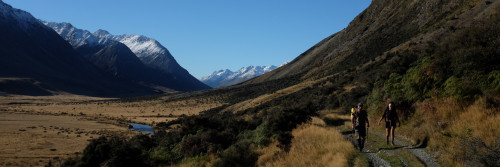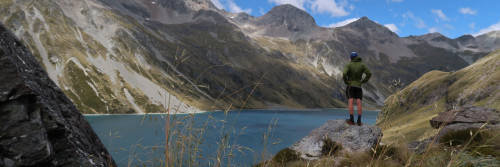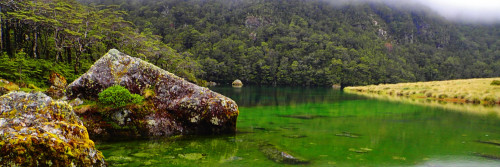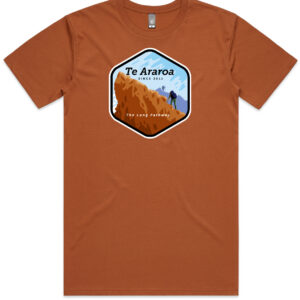News and media
Q&A with Te Araroa Manawatū trustee Paula De Goldi
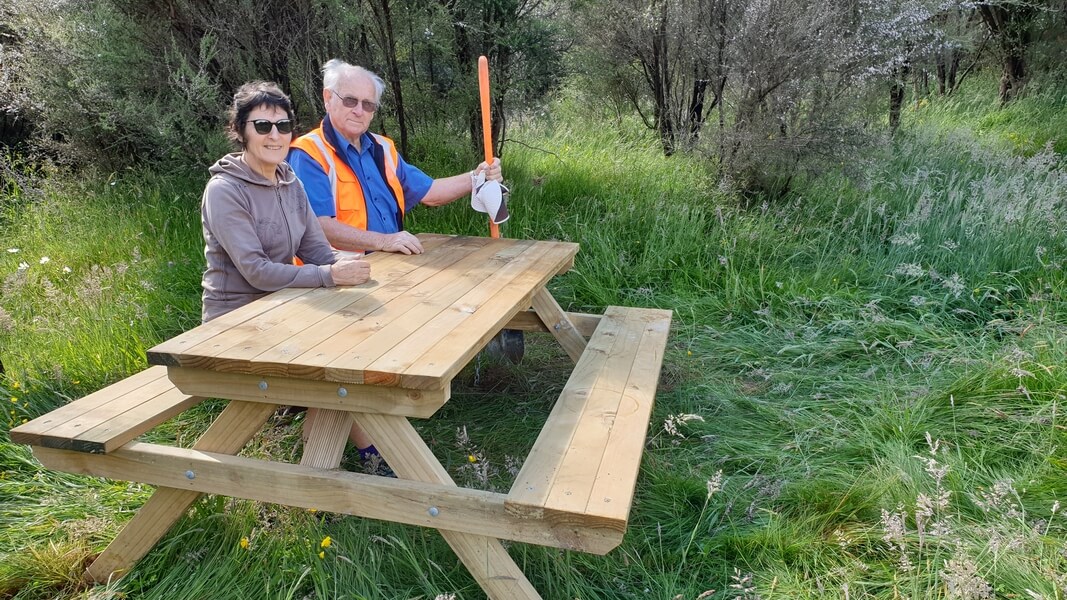
From teaching trigonometry to Palmerston North school students to maintaining Te Araroa tracks in the Tararua Range. That’s been the journey for semi-retired maths teacher Paula De Goldi, who has graduated from the classroom to the hills in recent years to take the Te Araroa trail experience in the Manawatū to new heights.
Paula is one of those rare sorts whose efforts make Te Araroa possible. As a member of the Te Araroa Manawatū Trust (TAMT), she spends countless hours helping to maintain tracks, educating people about the Te Araroa trail, and working with local groups and agencies to gain support and funding. She and her partner Brian also host walkers at their home in Palmerston North, with more than 200 enjoying their generous hospitality since 2015.
We caught up with Paula recently to find out why she does it and to hear a little about what makes the Manawatū section of Te Araroa so special.
How long have you had an interest in Te Araroa trail and what has your involvement been?
I first became involved in 2015. My partner Brian and I were invited to the Te Araroa Manawatū Trust (TAMT) dinner celebrating 10 years of the Trust in Manawatū. Brian was involved with the trail through his work with Palmerston North City Council. Following the dinner, we decided to open our home to hikers, offering accommodation. We have hosted over 200 hikers from 25 different countries so far.
In 2019 I accepted the invitation from Te Araroa Manawatū Trust to become a Trustee and was very fortunate to be mentored by master trail builder Ian Argyle, who played a major part in building Te Araroa Trail in Manawatū.
Brian and I also walk or bike sections of the trail throughout the country at every opportunity. One day we may eventually join the dots.
What is your day job outside of the work you do with Te Araroa?
I’m a semi-retired maths teacher, a volunteer with the New Zealand Indigenous Flora Seedbank (based at Massey University Palmerston North campus), a mentor with Big Brothers Big Sisters Manawatū, Secretary for the Science Centre Trust, and I travel to Hutt Valley whenever I can to spend time with my grandchildren (and their parents).
What is it about our national trail that has inspired you to make such a personal contribution?
It’s great being part of the Te Araroa Trail community – a community of volunteers, hikers, and supporters.
The early trail builders did a tremendous amount of work to make the 3,000 km walk possible. Some in our region are still actively involved (e.g. TAMT Chair Dave Grant), while others have retired from trail work. These people have inspired a new generation of volunteers to support the trail and continue the work.
While we would love to do the through-hike ourselves, it is not possible. However, we can share the experience of others by hosting hikers in our home and enjoying their company and stories from the trail. When we were young and travelled as backpackers overseas, we received incredible hospitality and kindness from locals in many different countries, as did our children when they travelled. Hosting Te Araroa hikers is a small way that we can repay the kindness and generosity of others.
What makes the section of trail passing through the Manawatū special?
The key highlight of the Manawatū section is passing the 1,500 km mark somewhere in the region; it changes each year. Other highlights include the varied nature of our trail – country roads, town and city footpaths, an historic cemetery, riverside pathway, farmland, green corridors, and the bush in the foothills of the Tararua Range. Hikers also enjoy the opportunity to spend a day or two in Palmerston North city, resupplying, buying new kit, eating in cafes, or just resting before taking on the Tararuas, if walking south. We have two overnight shelters along our section of the trail, one at each end of Burtton’s track. Moturimu Whare and Tokomaru Shelter were built specifically for Te Araroa hikers.
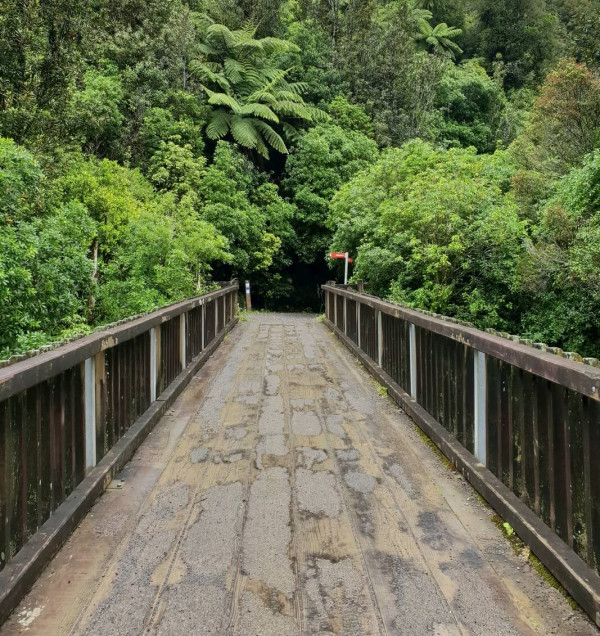
Photo caption: Black Bridge in Manawatū marks approximately halfway on the 3,000 km Te Araroa trail.
What has the Manawatū Trust been focusing on lately?
It’s been spring so the big focus over the past few months has been, and continues to be track maintenance; clearing and stump painting of gorse and spraying the seedlings, cutting back and spraying grass and blackberry, benching slips, windfall clearing in the bush sections, water tabling, and checking track conditions and signage. We have approximately 114 km of the Te Araroa trail in our region and throughout spring we clocked up about 250 hours of volunteer work. The Trust is also preparing funding applications to help pay for the work, has set up a Facebook page (@TeAraroaManawatu) to generate local interest, and is developing ongoing working relationships with the Department of Conservation (DOC) and local authorities.
I hear you host Te Araroa hikers from time to time. Where is your property, what does it offer and what have the people you have hosted this year been like?
Brian and I live in Papaioea, Palmerston North, 50 m off the trail where it follows the Manawatū River through the city. We host hikers in our home as we have plenty of space since our children have left. Hikers have the option to put up their tent among the fruit trees in the backyard or to sleep indoors in a bed with sheets. Only two of the 200 hikers so far have pitched their tents. We sometimes share a meal, depending on the numbers and the day, but hikers are free to use the kitchen and the laundry, have hot showers and use real towels, and relax in the garden.
Prior to this year, the first flush of hikers would arrive in town at the end of November, but with closures in Northland and Auckland, we hosted the first hikers at the beginning of October this year. We have had 13 people stay so far, which is double the number we had for the whole of the 2020-2021 season - the end of the first year of Covid-19. Eleven of the hikers this year have been from New Zealand and we’ve had two from the United States who travelled here at the end of their year-long stint in Antarctica. As with other years, all the hikers we’ve hosted have been a varied and interesting bunch.
Is there one particular Te Araroa walker who sticks in your mind?
We have a book for hikers to write in and we have photos of all 200 who have stayed with us. Looking through the book we can tell a story for each and every one. All are interesting and special and here’s a selection:
- Our first guests Petr (Czech) and Susanna (Germany)
- Rune (Denmark) who finished in Bluff, bought a bike and cycled back to Auckland
- Landon, who went on to create the Te Araroa Trail App
- itsrossjackson.com: Gay Man Walking
- Harry, the hiker who arrived at the door with a leg of ham
- Six year old Jonny and nine year old Elizabeth
- @barefootwalk4talk
- George who went and picked up the bike he bought on TradeMe and rode northbound to Ohakune
- Nat, who ran the 3000 km unsupported
What would you like to see for Te Araroa trail in 2022?
We would like to see the return of hikers from overseas to join the increasing number of New Zealanders walking the trail.
More New Zealanders discovering Te Araroa trail and doing section or day walking in their local area.
Getting more of the trail off the road, especially the Whanganui to Feilding section in our region. Somehow, we need to get the support of farmers to achieve this.
A greater level of government funding for Te Araroa Trust and for DOC, to enhance and strengthen the trail.
Banner photo caption: Paula De Goldi with master track builder Ian Argyle.
